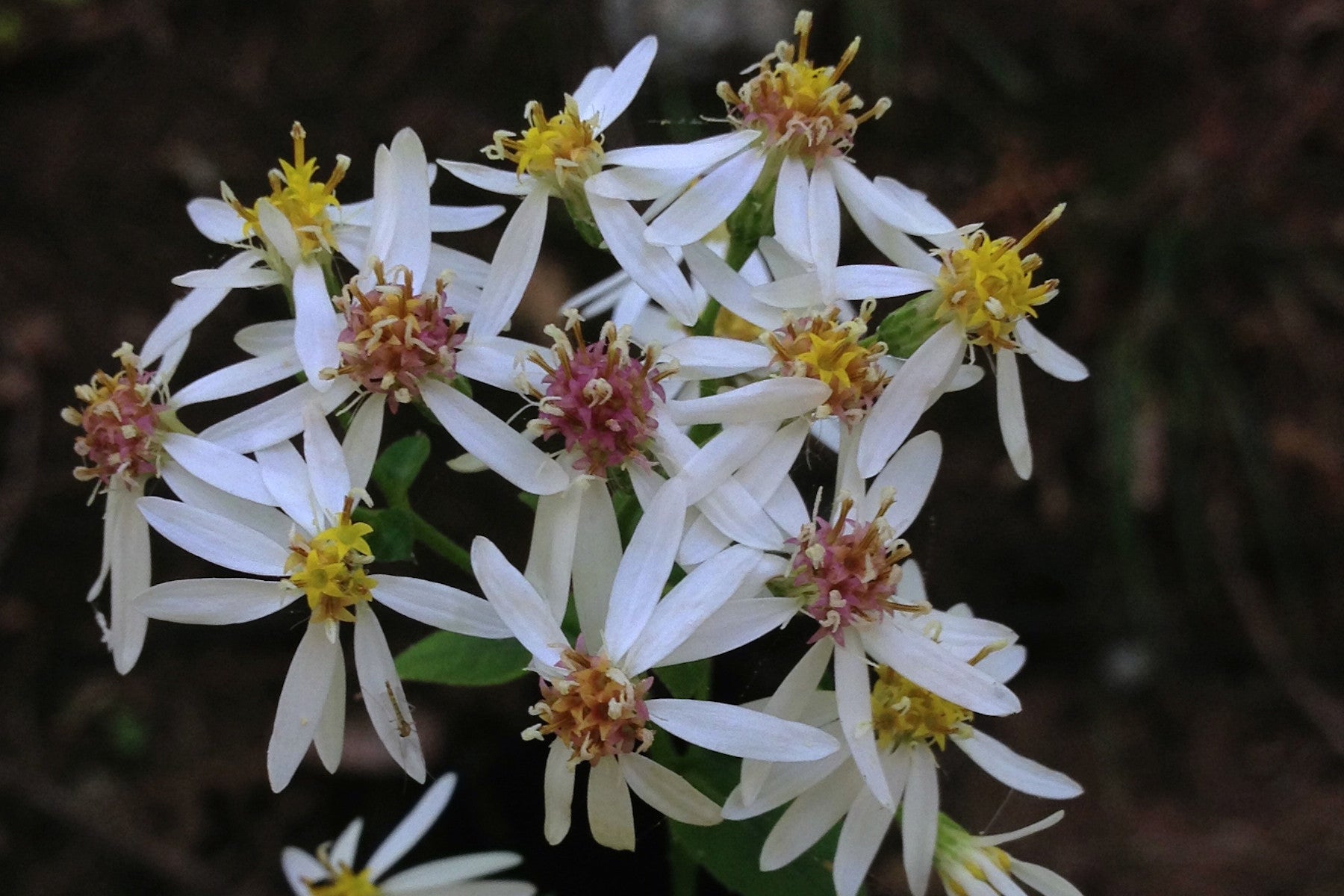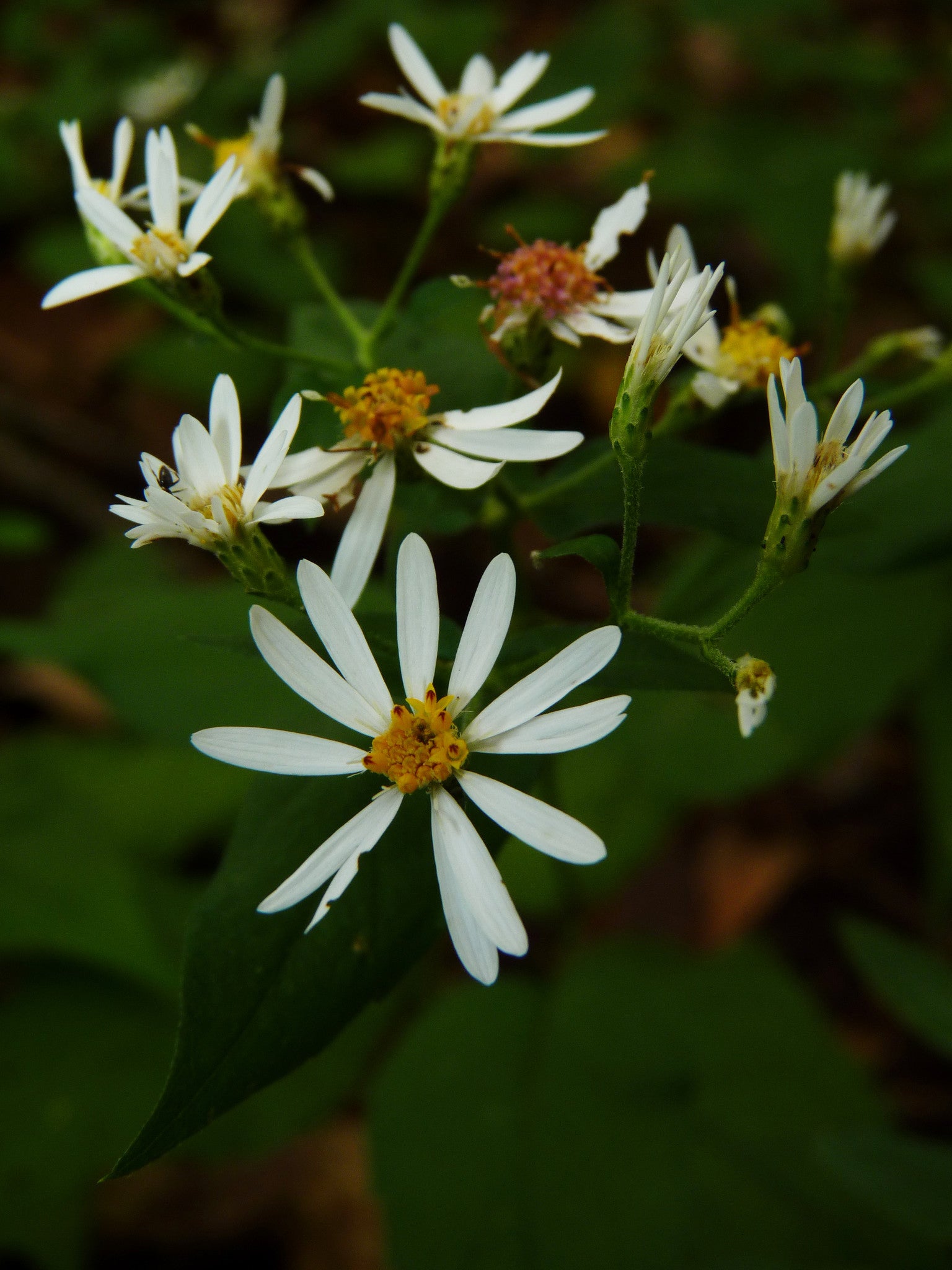Eurybia divaricata
Approx. 0.5 litre pot
About this cultivar:
Eurybia divaricata, previously know as Aster divaricatus, also known as the wood aster, is one of the prettiest shade-loving plants around. It gets its delicate graceful habit from its ts dark, almost black, wiry stems that are almost vertical between each leaf node. It has an illustrious garden history, originally described by Linnaeus in 1753, it was made popular by Gertrude Jekyll who allowed it to flop over Bergenia in a her own borders.
- Position: Full sun, partial shade
- Soil: Almost any soil, grows well in Ballyrobert
- Flowers: September, October, November, December
- Other features: Grows well in Ballyrobert
- Hardiness: Fully hardy - grows well in Ballyrobert!
- Habit: Clump forming, bushy
- Foliage: Deciduous
- Height: 30 - 60 cm (1 -2 ft)
- Spread: 30 - 60 cm (1 - 2 ft)
- Time to full growth: 2 to 5 years
- Plant type: Herbaceous Perennial
- Colour: Green, yellow, white, black
- Goes well with: Early flowering plants (like Lupins, Delphiniums and Papaver) in order to keep interest in that area once the earlier flowering plant has faded. However they also pair well with flowers such as Amsonia, Aolidago, Rudbekia, Helenium, Helianthus, and grasses such as Stipa. We have also experimented with Sedum, Astrantia and even Crocosmia.
About this genus:
Eurybia is a genus of plants in the composite family that were previously included in the genus Aster. All species are native to North America, though some are also present in northern Eurasia. There are 23 species in the genus including 1 hybrid. The name was first applied by Alexandre de Cassini in 1820. The name is derived from Ancient Greek ευρυς (eurys), meaning wide, and βαιος (baios), meaning few, perhaps in reference to the small number of relatively wide ray florets. Eurybia is also a sea goddess in Greek mythology and a Genus of butterfly!
All species within the genus are perennials that grow from 10 to 120 cm in height. They have rhizomes, all of which often become woody.
Most garden types can be grown in semi or deep shade where the usually-white flowers will stand out. For a similar white-on-dark theme try plant partners that have dark foliage – like Cotinus coggygria, Corylus avellana 'Purpurea', Sambucus nigra 'Black Beauty' and Sambucus nigra 'Black Lace'.
Most Eurbyia make a fine path edging in shady areas and due to their slow growth and drought tolerance it can also be grown in a wall that has a good bit of soil. They can also extend the flowering season of an autumn border when planted behind other later-flowering, non-showy aster-type plants such as Aster lateriflorus 'The Prince'








